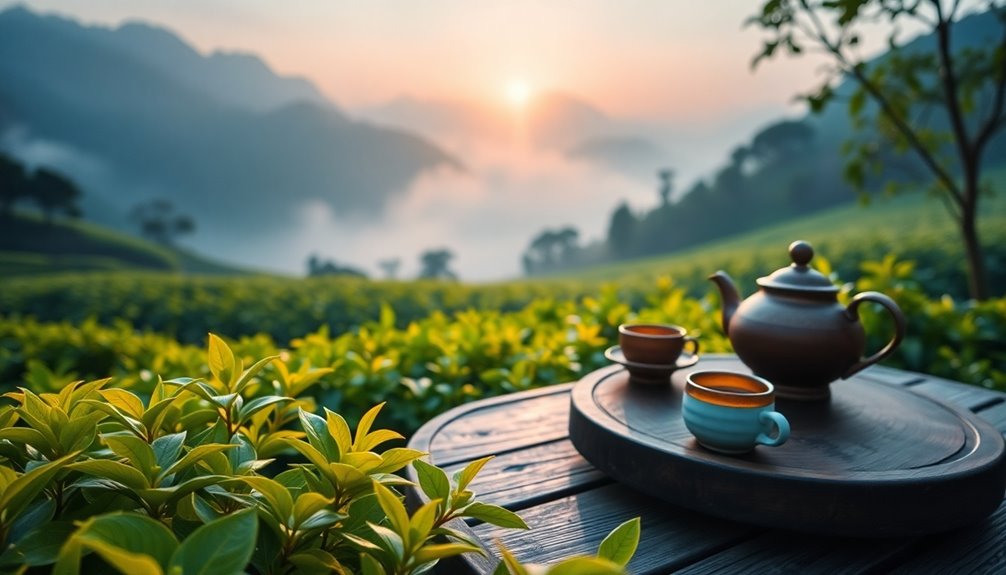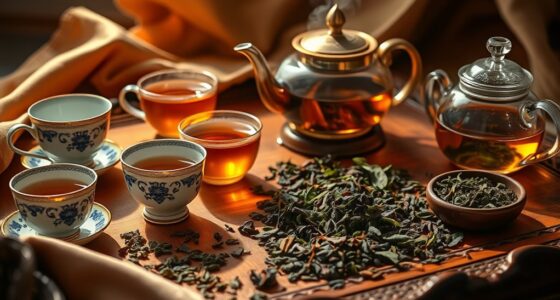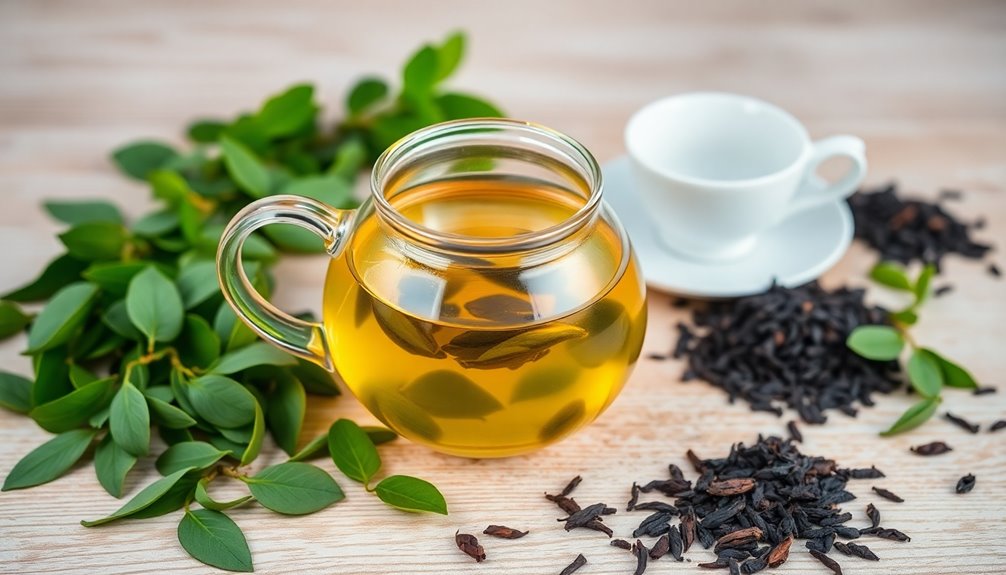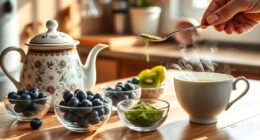Yellow tea is an extraordinary beverage that's quite different from green and black teas. It has a mellow flavor, thanks to a unique production process that includes careful micro-fermentation. This labor-intensive method makes yellow tea rare, with its three main types originating from specific areas in China. Historically, it was a symbol of royal status, enjoyed exclusively by emperors. Beyond its rich cultural significance, yellow tea offers health benefits like better digestion and immune support. If you're curious about its fascinating production techniques and how to enjoy it, there's much more to uncover!
Key Takeaways
- Yellow tea is unique for its mellow flavor, resulting from a labor-intensive production process involving micro-fermentation before drying.
- Historically significant, yellow tea was a symbol of royal status and exclusive to emperors during the Tang and Qing Dynasties.
- Global production of yellow tea is limited, with only a few types and specific regions in China, enhancing its rarity.
- Traditional hand-processing techniques, including high-temperature roasting and bamboo rolling, contribute to the tea's unique taste and aroma.
- Misunderstandings about yellow tea often lead to confusion with green tea, overshadowing its rich cultural heritage and health benefits.
Introduction
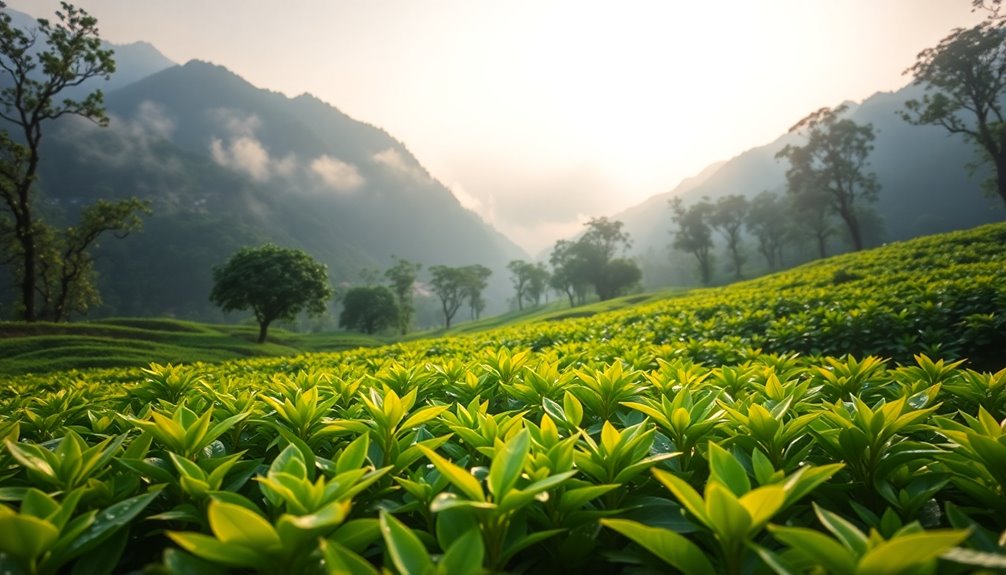
When it comes to tea, you might think of common varieties like black or green, but yellow tea offers a rare and intriguing alternative. This unique tea is known for its mellow flavor, which comes from a special production process. Unlike green tea, yellow tea undergoes a micro-fermentation before it's completely dried, giving it a delicate and complex taste.
You'll find only three main types of yellow tea: Jun Shan Yin Zhen, Huo Shan Huang Ya, and Meng Ding Huang Ya. Each type has its distinct flavor profile, making it a treasure for tea lovers seeking unique flavors. The labor-intensive production process requires specialized skills, which is why this rare tea is hard to find outside of China.
Yellow tea isn't just about taste; it also carries health benefits. It can help with digestion and boost your immune system, making it a wonderful addition to your tea collection.
With its rich history in Chinese tea culture, yellow tea was once reserved for emperors, showcasing its exclusivity. So, if you're ready to explore a unique flavor that stands out in the tea world, yellow tea is definitely worth a try!
Historical Significance in Tea Culture
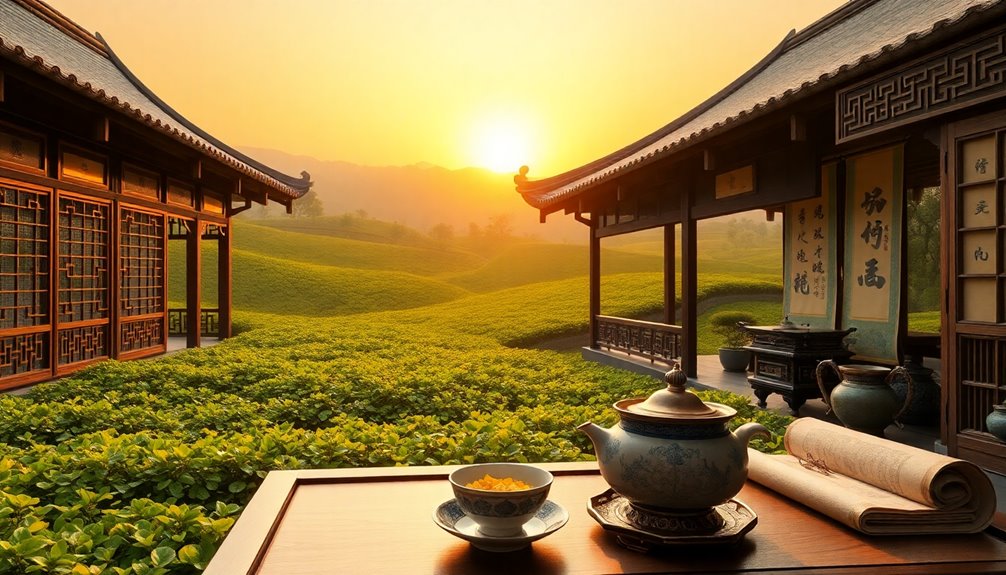
Yellow tea holds a special place in Chinese tea culture, tracing its origins back to the Tang Dynasty (617-907 AD). This tea was a symbol of royal status, reserved exclusively for emperors and their courts. Its historical significance is evident in how it was treated as tribute tea during the Qing Dynasty, gifted to nobility and showcasing its value in society.
The unique yellow color of this tea comes from careful production methods that involve a special fermentation process. Only a few skilled tea masters know the secrets behind making yellow tea, which adds to its rarity and mystique. This exclusivity means that not everyone can enjoy its rich taste and aroma, making it even more special.
Throughout history, yellow tea has held cultural significance, representing prestige and sophistication. However, as modern preferences shift toward more commercially viable tea types, the legacy of yellow tea faces challenges. Many traditional production methods are at risk of being lost.
If you appreciate the deep history and unique characteristics of yellow tea, it's important to support its preservation and celebrate its role in tea culture. This way, you can help keep its rich heritage alive for future generations!
Limited Global Production Volume
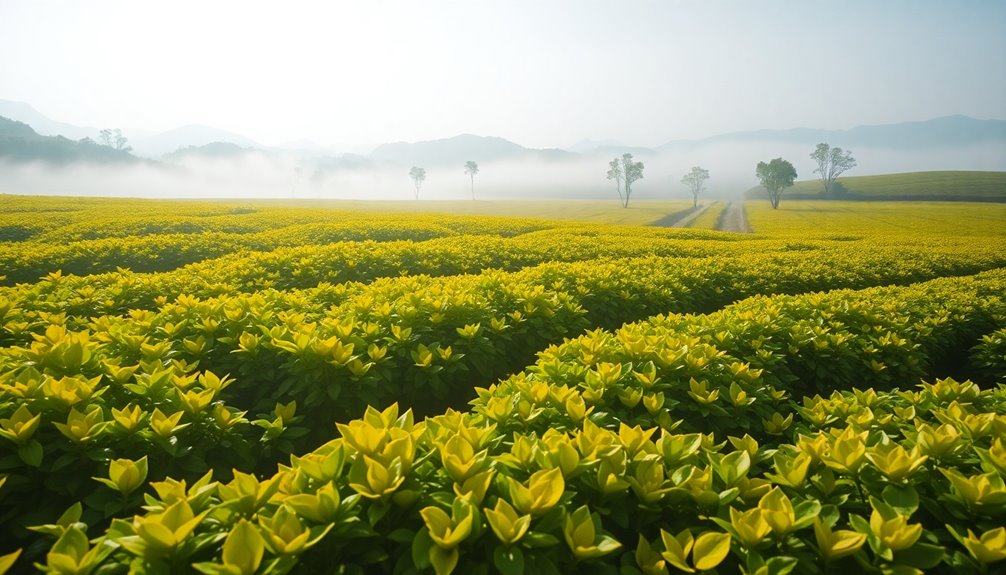
Limited global production volume makes yellow tea a rare gem in the tea world. This unique tea comes in only three main types, which makes its production limited and special. The process of making yellow tea is labor-intensive, involving unique fermentation steps that require skill and attention. Because of this, scaling up production isn't easy.
Most yellow tea is produced in specific regions of China, like Huangshan Mountain and Junshan Island. These areas provide the perfect growing conditions, but they also mean that the total quantity produced each year is tiny compared to other tea types. Some varieties yield only a few kilograms per harvest!
This scarcity, paired with the specialized craftsmanship needed for its production, makes yellow tea a highly sought-after treasure among tea connoisseurs and collectors.
If you're looking to explore the world of tea, finding yellow tea can be a delightful adventure. You'll be joining a select group of tea lovers who appreciate the rarity and quality of this extraordinary drink.
Traditional Hand-Processing Techniques
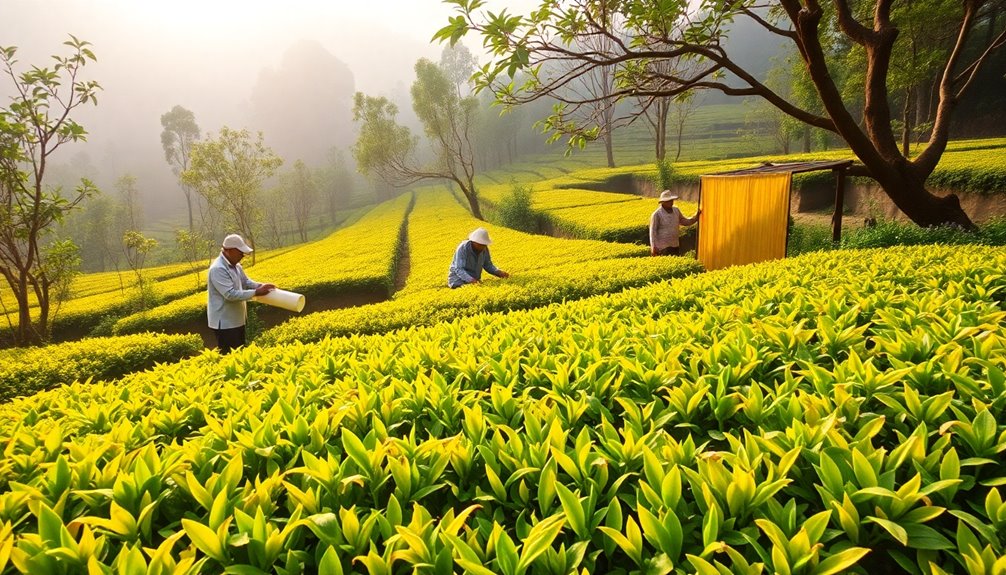
The traditional hand-processing techniques for yellow tea are what set it apart from other varieties. This tea goes through a meticulous process that begins with high-temperature roasting to stop enzymatic activity. By doing this, the tea keeps its unique flavor profile, making it truly special.
After roasting, the leaves are rolled on bamboo trays. This step helps reduce heat and allows for controlled fermentation, which is crucial for bringing out the tea's mellow sweetness.
The fermentation process, known as Men Huang, requires careful environmental control and can take several hours to days. This is what develops the characteristic yellow hue and distinct taste of yellow tea.
In the final stages, charcoal baking is used to enhance the aroma and flavor, showcasing the importance of traditional firewood techniques.
Every step in the hand-processing of yellow tea is labor-intensive and demands skilled craftsmanship. This dedication is part of what makes yellow tea one of the rarest types available.
Market Misunderstandings and Perceptions
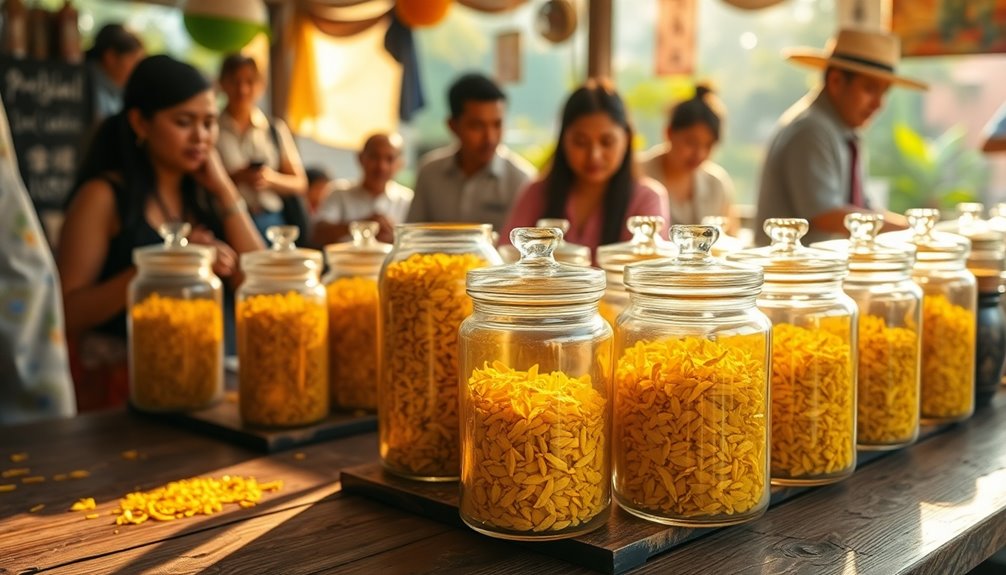
Many tea enthusiasts mistakenly view yellow tea as just another type of green tea, thanks to their similar leaf structures and processing methods. This misunderstanding leads to misconceptions about the rarity and flavor profiles of yellow tea.
With only three main types available, each with its own unique production method and historical significance, you might be surprised by the diversity of flavors.
The production of yellow tea is labor-intensive and requires skill, including a special fermentation step that many people don't recognize. This time-consuming process contributes to the perception that yellow tea is less accessible than more common varieties like green tea.
Many consumers overlook the rich cultural heritage and health benefits associated with yellow tea, thinking it's just a green tea alternative.
Market trends often favor green tea, which can cause fluctuating demand for yellow tea, making it seem even rarer. By understanding these market perceptions and the intricate processing methods behind yellow tea, you can better appreciate its value.
Dive into this rarest tea with an open mind, and you might discover a delightful new favorite!
Practical Applications
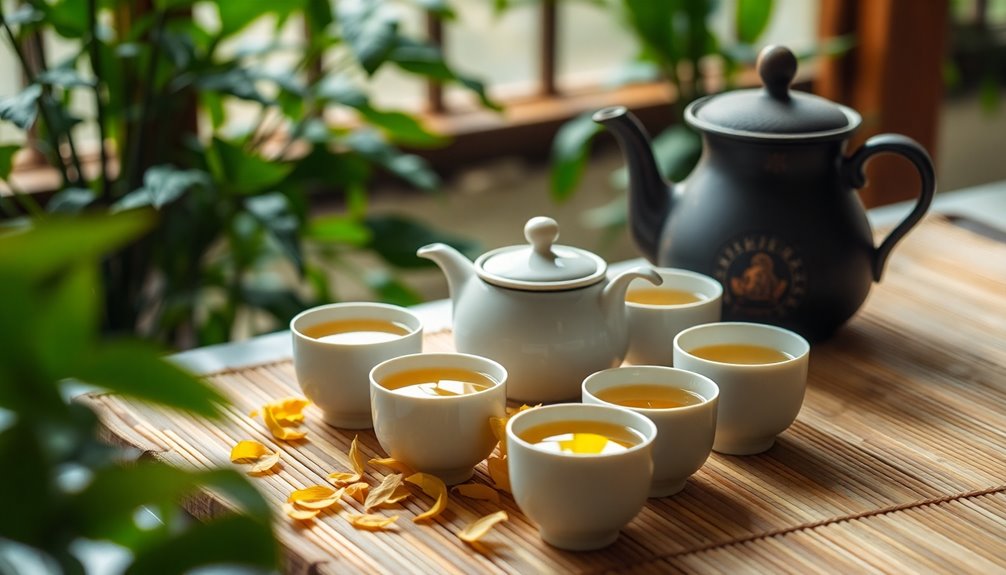
When you explore yellow tea, you'll find several practical applications that enhance your brewing experience and enjoyment.
Start by using 2 to 2.5 grams of loose leaf tea for every 200 ml of water. Heat your water to 75-80°C and let it steep for just 2-3 minutes. You can adjust the brewing time based on your taste preferences, making it a fun experiment!
To keep your yellow tea fresh, proper storage is key. Use airtight containers and keep them away from sunlight and moisture. Ideally, consume your tea within 1-2 years to enjoy its rich flavors and health benefits.
One of the most fascinating aspects of yellow tea is its unique production process. This includes a micro-fermentation step that enhances its flavor while retaining antioxidant content, like polyphenols and catechins.
These compounds can help combat oxidative stress and support weight management.
Engaging with yellow tea offers a mindful experience, allowing you to relax and appreciate traditional tea culture.
Frequently Asked Questions
What Does Yellow Tea Do to Your Body?
Yellow tea boosts your antioxidants, helping combat oxidative stress. It provides a gentle energy lift, aids digestion, supports heart health, regulates blood sugar, and promotes relaxation, contributing positively to your overall well-being.
What Is the Rarest Type of Tea?
The rarest type of tea is Jun Shan Yin Zhen, also known as Silver Needle. You'll find it's made exclusively from unopened buds on Jun Shan Island, making it highly sought after and prized by collectors.
What Is the Best Time to Drink Yellow Tea?
The best time to drink yellow tea is in the morning or early afternoon. It gives you a gentle energy boost, pairs well with light meals, and can aid digestion, enhancing your overall well-being.
What Is the Meaning of Yellow Tea?
Yellow tea represents a unique blend of tradition and exclusivity. Its mellow flavor and distinct processing mark it as a special treat, often reserved for those who appreciate the finer nuances of tea culture.
Conclusion
Now that you know about yellow tea, you can appreciate its unique place in tea culture. With limited production and special processing, this tea offers a rare experience. Don't let misunderstandings hold you back—explore its rich flavors and history. Whether you're brewing a cup for yourself or sharing with friends, yellow tea can be a delightful addition to your collection. So go ahead, try some yellow tea and enjoy its special charm!

